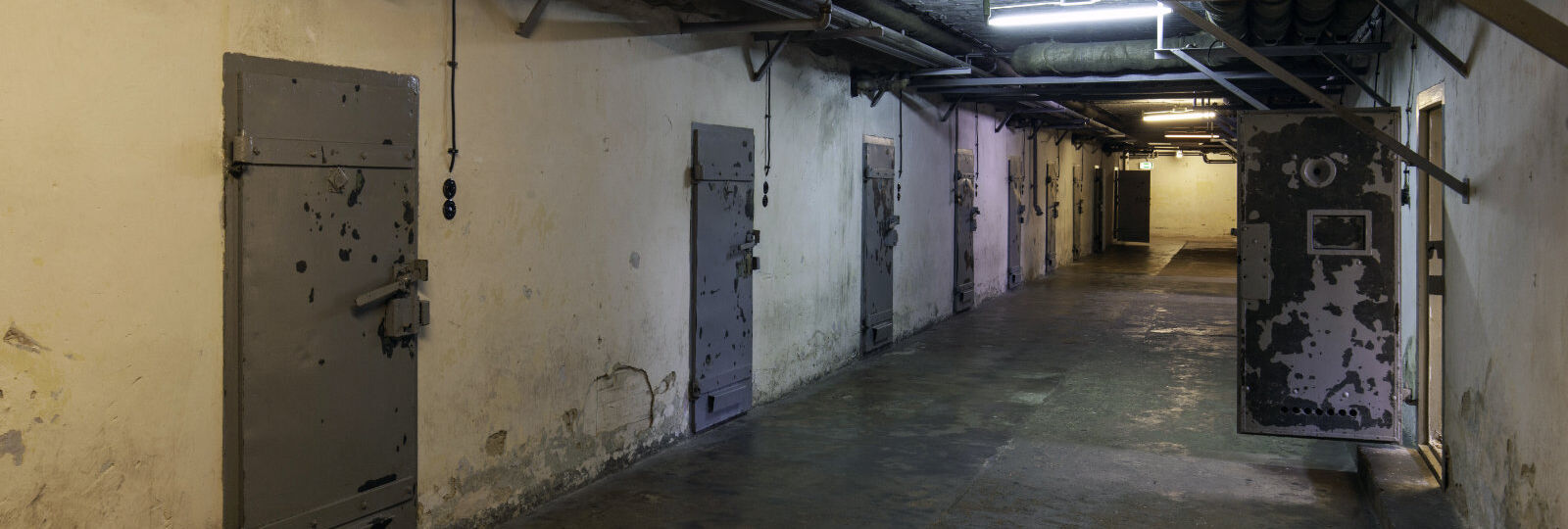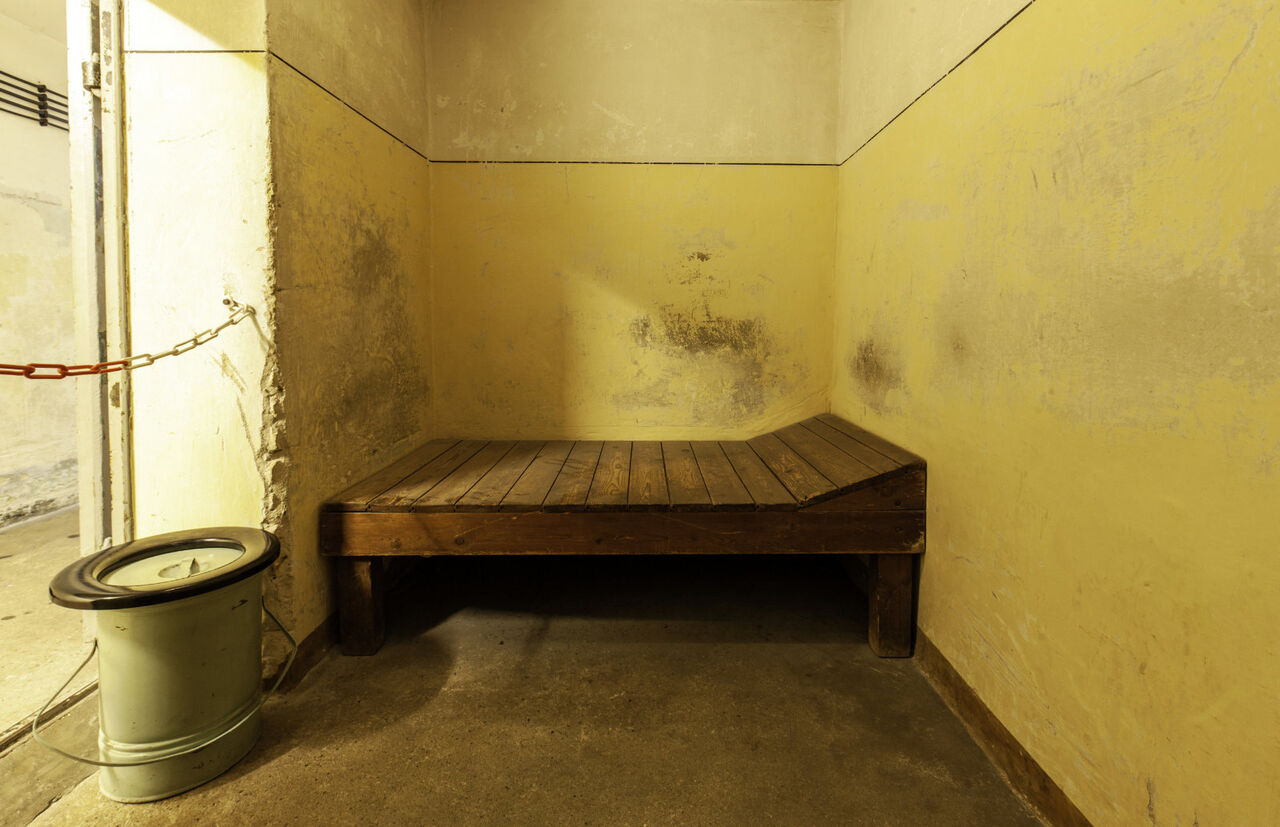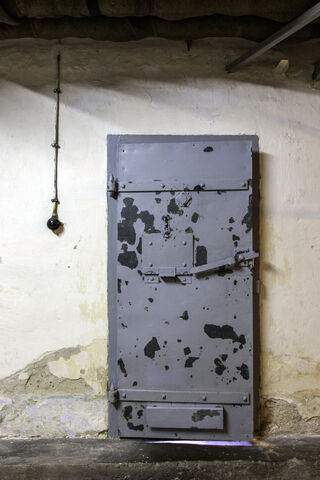Central Soviet remand prison
After the Soviet special camp at the Genslerstraße site was dissolved in autumn 1946, the prisoners remained behind to build cells in the cellar of the former canteen kitchen. From 1947, the Soviet secret service used this windowless, bunker-like wing, the so-called submarine, as a central remand prison.
The damp and initially unheated rooms were only equipped with wooden plank beds and buckets. A light bulb burned day and night. The interrogations of the detainees, which usually lasted for hours, mainly took place at night and often included threats and physical violence. Former prisoners later reported that they were forced to confess through sleep deprivation, hours of standing or days spent in special detention cells.
In addition to those incriminated as suspected Nazis, the prisoners mainly included suspected political opponents: members of the democratic parties SPD, LDPD and CDU, but also communists and Soviet officers who were not considered loyal to the regime. Many of them were later sentenced by Soviet military tribunals to many years of imprisonment and forced labour. Imprisonment was a targeted measure to secure communist rule by reorganising East German society according to Soviet ideals.
The majority of former prisoners who applied for rehabilitation after the end of the SED dictatorship were declared innocent by the Russian military prosecutor's office in Moscow.
Fates of imprisonment
Fates of prisoners from the Soviet prison era


